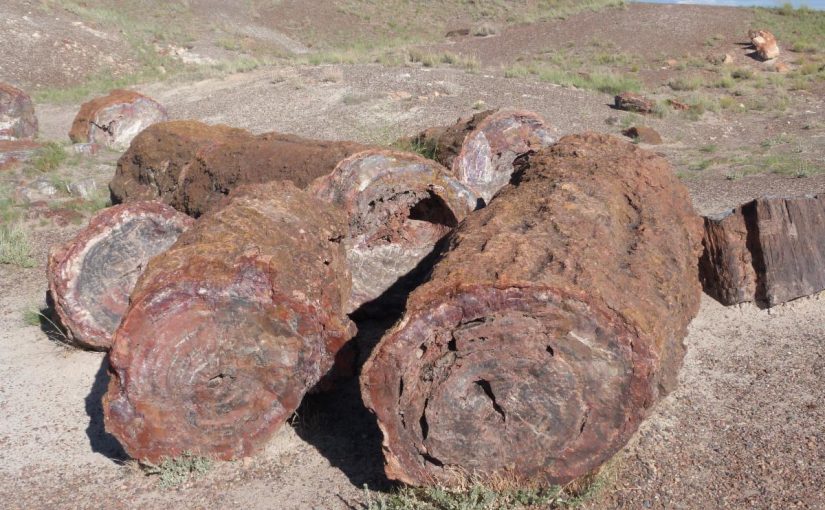Author: Karen Hoover
We had the opportunity in August to make a 3-week road trip out to California with stops in several National Parks, COVID-delayed visits with family and friends, and the special opportunity to deliver a carload of food and supplies from many in our congregation to Navajo friends of the congregation, Burke and Vivian Burbank. There is something freeing and clarifying about a road trip in the West and we never ceased to be amazed and grateful for the truly wondrous variety and beauty of God’s creation – whether hiking or driving!
It was during our visit to the Petrified Forest National Park in Arizona that I began to reflect on the process of petrification and possible relevances to our lives. The first — and obvious —question when you are walking among the stone logs is just how, exactly, does a living tree become petrified? What could possibly turn wood to stone? Scientists tell us that some 200 million years ago, these trees fell into an enormous river and were buried beneath layers of silt, mud, sand, and volcanic ash which amazingly protected them from decaying. Then minerals and silica seeped in and saturated the dead wood, in time mineralizing it and turning it to beautiful, colorful stone logs. As the landscape dried and became desert these amazing creations of nature were revealed to delight all who encounter them.
But how does the process of petrification relate to us, as living human beings, in our lives in this time? We’ve heard the expression “petrified with fear.” While frightening, such an experience might provide an opportunity to examine our fears and evaluate whether or not our reaction was accurate or justified. Have we become deadened to the needs and feelings of others? Are we hardened and unable to accept change? Are we petrified because we have lost hope? We don’t have to remain buried under layers of mud and ash while our hurts and angers and fears mineralize in us until we become petrified.
The closest analogy in the Bible to petrification that I can think of is the story of Lot’s wife (Genesis 19:26): When facing unwelcome change while fleeing her home, she looked back with doubt and reluctance (despite being warned not to) and was turned into a pillar of salt. Later, in Luke 17:32-33, Jesus cautions us with the declaration, “Remember Lot’s wife! Whoever seeks to gain their life will lose it but whoever loses their life will preserve it.”
A Prayer: We need you before us, beside us and behind us, dear God, as we strive to be the vibrant living servants of your Creation. Help us to remain alive to your Word for our lives lest we succumb to the forces of petrification that cause us to lose heart, hope and purpose. Amen.

